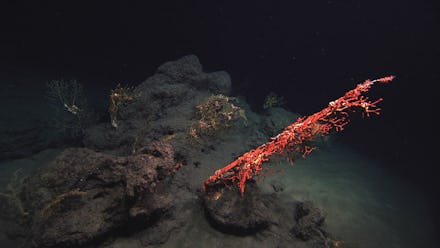The Gulf Of Mexico Will Experience One Of Its Largest Dead Zones Ever

A dead zone in the Gulf of Mexico will take over an area of the ocean the size of Connecticut — and there's "no progress" in finding a solution.
A report from the Louisiana Universities Marine Consortium has a grim outlook for the ocean basin. An annual algae bloom that decays and expends oxygen from the water, killing any biodiversity in the region, is expected to cause a hypoxic zone (also called a dead zone) to expand almost three times larger than normal.
It's a manmade form of pollution disrupting the ocean that could have dire impacts. This year's dead zone should stretch about 6,800 square miles, and "no progress has been made" on the federal level in addressing the matter, the Louisiana researchers reported.
The vast suffocation of ocean water in the Gulf of Mexico is an annual occurrence since the early 1970s thanks to mass-fertilizer runoff from industrial-scale meat production in the Midwest. The fertilizer used to create the United States' enormous corn crop supply drains into the Mississippi river just before blooming, then decaying, in the Gulf.
"About 12 million people live in urban areas that border the Mississippi, and these areas constantly discharge treated sewage into rivers," NOAA wrote in a video explaining the dead zone. "However, the majority of the land in the Mississippi's watershed is farm land. Each spring as farmers fertilize their lands preparing for crop season, rain washes fertilizer off the land and into streams and rivers."
The fertilizer contains enormous supplies of nutrients that feed phytoplankton growth, causing the massive blooms that result in dead zones.
Read more: